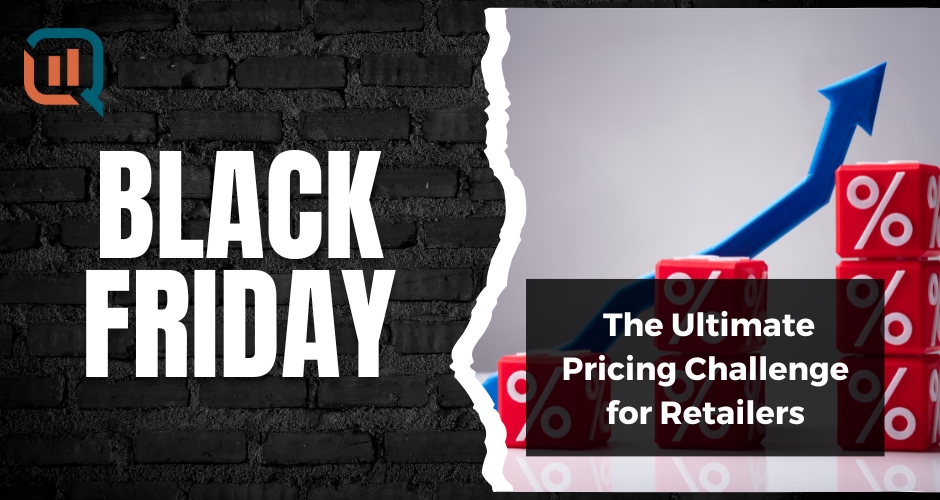As a solutions engineer who writes almost exclusively about the pricing challenges faced by retailers, I would be remiss not to dedicate a blog to the most important and high profile retail pricing event of the year: Black Friday.
While the allure and mystique of Black Friday have diminished over the years, it’s still a shopping experience that millions of American consumers are either currently participating in or preparing for. It wasn’t long ago that Black Friday meant waking up early the day after Thanksgiving and raiding a series of department stores like medieval vikings, physically competing with other shoppers for the best deals. Who can forget the clips of ransacked shelves, and shoppers knocking people out of their way like NFL linemen? Black Friday gradually shifted to start on Thursday evening, prompting shoppers to hastily clear away the turkey leftovers and dirty dishes to embark on their annual shopping extravaganza. I remember how in high school some friends and I planned a Grand Theft Auto style heist for Black Thursday/Friday, complete with specifications around the order we would visit stores, how much time was allocated in each store, and our prioritized items at each. I had maybe $50 dollars to my name to spend, and I was determined to get the best deal possible on everything I bought.
While Black Friday still mandates some planning in its current form, it’s no longer necessary to prepare for a shopping run the same way detectives do when trying to crack a cold case. Today’s marauding shoppers don’t even have to leave their house as the event is now mostly online ecommerce. Most significantly, it’s no longer limited to a sales period of one or two days. Depending on what ads you read, Black Friday starts at the beginning of November and goes through Christmas. Retailers of all kinds no longer wait to offer enticing deals until the holiday, due in part because shoppers are increasingly seeking out early deals and extended discounts. For pricing professionals who monitor and set competitive prices for Black Friday, what used to be a challenging pricing day or two has now become a month.
I’ve talked to a gamut of pricing directors and managers this week that are already feeling the strain from the labor involved with meticulously pricing their products against their competition. Even if a retailer’s sales don’t go live for a few days yet, they still have to monitor their suite of competitors and make last minute pricing adjustments to products. Given the sheer volume of products retailers offer at discounted prices during Black Friday, the amount of pricing reviews and subsequent decisions required is staggering. With holiday sales now spanning the entire month of November, retailers have a wider window to influence consumer purchasing decisions and secure multiple sales throughout the season. According to BCG, “Retailers need relevant discounts and targeted ads based on product interests and key moments if they’re going to convert shoppers during what is sure to be a highly competitive shopping season.” It’s more important this year than previous Black Friday’s to be aware of competitor pricing strategies, and have fluid pricing practices to remain alluring to the holiday shopper.
Fortunately, advanced pricing tools like QL2’s Opti Price can automate the time-consuming task of manual price checks. By conducting daily or even twice-daily price refreshes, retailers can quickly identify products where competitors have undercut their prices, allowing for rapid response. Several of my customers are using price alerts to be notified each day when their most important SKUs have hit the Black Friday sale page of a competitor. Whether your company’s seasonal sale is only during Thanksgiving weekend or the whole month, ensuring your doorbusters aren’t being trumped by Walmart or Target is a priority. That’s because the same BCG survey determined that 74% of consumers plan to participate in Black Friday shopping, with an average budget of $460, meaning there are substantial revenue opportunities this year for those that are priced right.
If you’re fatigued by the pricing decisions required during the November sales events, and need help acquiring mandatory competitive data at scale, email me at cschneider@ql2.com to discuss our solutions!

Helping product/merchandising teams identify pricing gaps to maximize sales and profitability.

